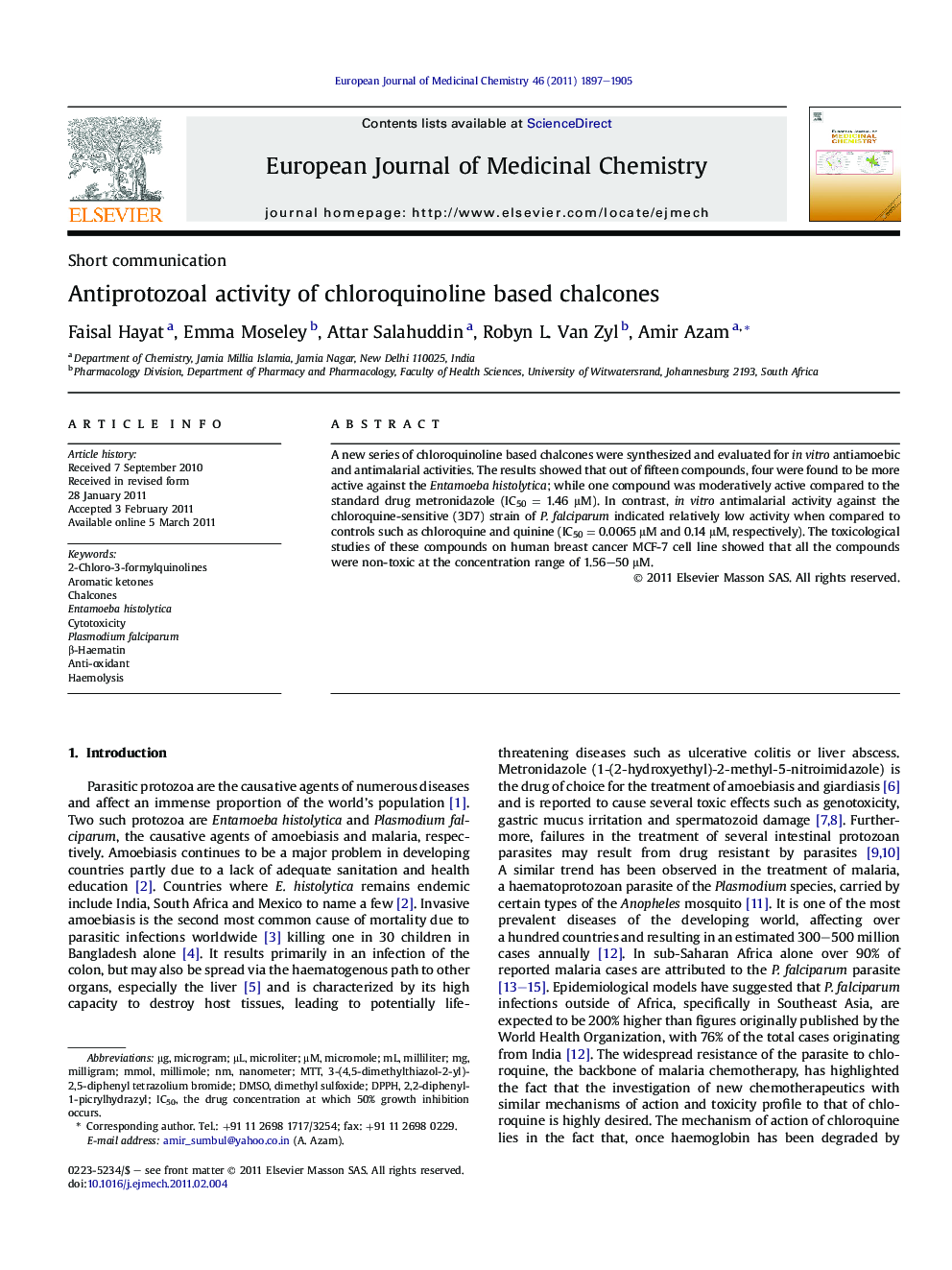| Article ID | Journal | Published Year | Pages | File Type |
|---|---|---|---|---|
| 1397537 | European Journal of Medicinal Chemistry | 2011 | 9 Pages |
A new series of chloroquinoline based chalcones were synthesized and evaluated for in vitro antiamoebic and antimalarial activities. The results showed that out of fifteen compounds, four were found to be more active against the Entamoeba histolytica; while one compound was moderatively active compared to the standard drug metronidazole (IC50 = 1.46 μM). In contrast, in vitro antimalarial activity against the chloroquine-sensitive (3D7) strain of P. falciparum indicated relatively low activity when compared to controls such as chloroquine and quinine (IC50 = 0.0065 μM and 0.14 μM, respectively). The toxicological studies of these compounds on human breast cancer MCF-7 cell line showed that all the compounds were non-toxic at the concentration range of 1.56–50 μM.
Graphical abstractNovel chloroquinoline based chalcones 4–18 were synthesized. Compounds 5, 10, 11, 15 and 17 exhibited better antiamoebic activity and screened for cytotoxicity.Figure optionsDownload full-size imageDownload as PowerPoint slideHighlights► A new series of chloroquinoline based chalcones were synthesized and evaluated for antiprotozoal activities. ► In vitro antiamoebic activity were found to be higher than antimalarial activity. ► All the active compounds were non-toxic at the concentration range of 1.56–50 μM.
